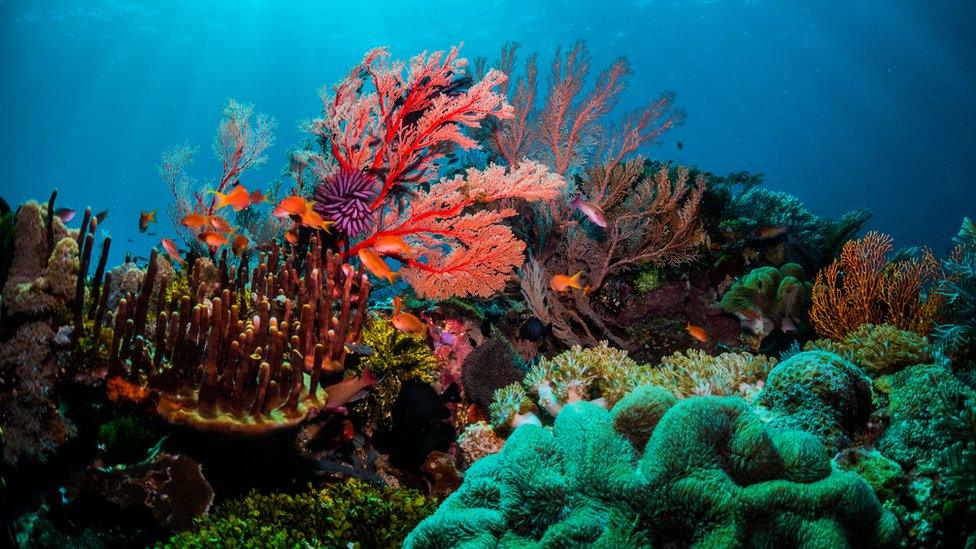Wales' slate landscape wins World Heritage status
- Published
The dramatic slate landscapes which once 'roofed the world'
An area famed for its slate industry has joined Egypt's Pyramids, India's Taj Mahal and the Grand Canyon to become a Unesco World Heritage Site.
The slate landscape of north-west Wales has become the UK's 33rd site, external on the prestigious list after the World Heritage Committee approved the UK bid.
They have awarded more than 30 new inscriptions to cultural and natural bids worldwide already this week.
Prime Minister Boris Johnson had backed the area's "remarkable uniqueness".
It comes after Liverpool lost its World Heritage status earlier in July when the Unesco committee meeting in China ruled development threatened the value of its waterfront.
Allow X content?
This article contains content provided by X. We ask for your permission before anything is loaded, as they may be using cookies and other technologies. You may want to read X’s cookie policy, external and privacy policy, external before accepting. To view this content choose ‘accept and continue’.

Following the decision, Wales bid leader Dafydd Wigley addressed the committee by video link from the National Slate Museum in Llanberis.
He said: "Here in Gwynedd we have an outstanding example of a complete landscape and this inscription is a source of great pride for our communities in north Wales and it's a celebration of our contribution to the world.
"We look forward to being part of the wider community of World Heritage Sites and this inscription has recognised our global contribution."
The slate landscapes of Snowdonia in the county of Gwynedd are said to have "roofed the 19th Century world" as slate from its quarries was exported around the globe.
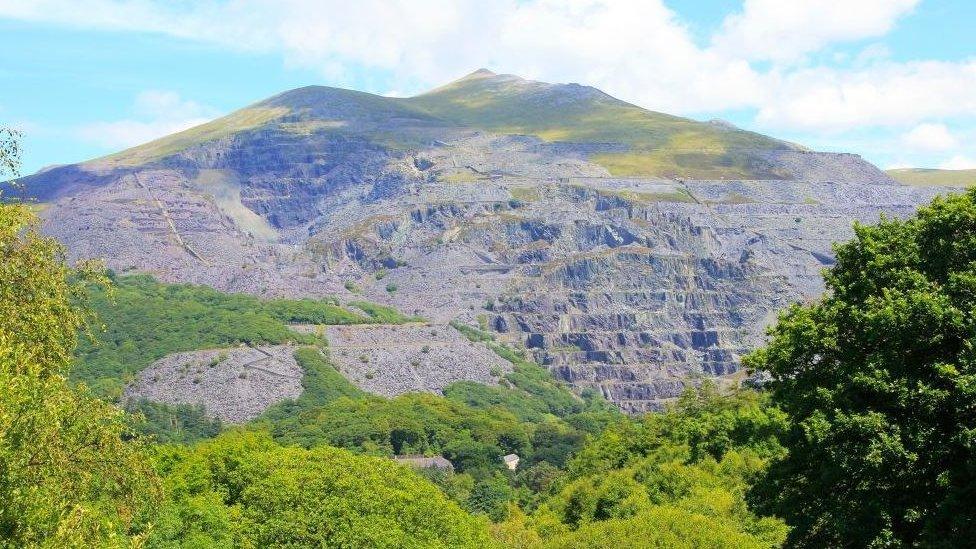
Slate from quarries in north-west Wales was exported around the globe
Unesco's World Heritage Committee was looking for a site of "outstanding universal value" which should be a "unique landmark", external and which has a "cultural, historical or physical significance".
Areas that have already been inscribed on the elite list, external this year include the Great Spas of Europe, the Dutch Water Defence Lines in the Netherlands and the Trans-Iranian Railway, external.
Wales' First Minister Mark Drakeford said: "Today's announcement recognises the significant contribution this part of North Wales has made to the cultural and industrial heritage not only of Wales, but of the wider world. Welsh slate can be found all over the world.
"The quarrying and mining of slate has left a unique legacy in Gwynedd, which the communities are rightly proud of. This worldwide recognition today by Unesco will help preserve that legacy and history in those communities for generations to come and help them with future regeneration."
Allow X content?
This article contains content provided by X. We ask for your permission before anything is loaded, as they may be using cookies and other technologies. You may want to read X’s cookie policy, external and privacy policy, external before accepting. To view this content choose ‘accept and continue’.

The UK government's Heritage Minister Caroline Dinenage said: "Unesco World Heritage Status is a huge achievement and testament to the importance this region played in the industrial revolution and Wales' slate mining heritage.
"I welcome the prospect of increased investment, jobs and a better understanding of this stunning part of the UK."

PASSIONATE ABOUT THE ENVIRONMENT?: The BBC is looking for young people with original ideas and stories to tell

Plaid Cymu's culture spokeswoman Heledd Fychan called the decision fantastic news, adding: "Achieving this prestigious status is a boost - a boost to pride in our Welsh heritage and a boost to Wales' place on the international stage.
"This is about preserving and protecting our heritage so that it plays a role in Wales' future."

Dafydd Wigley (seventh from left) and Mark Drakeford with some of the bid team at the National Slate Museum
Dr David Gwyn, an archaeologist and heritage consultant who has worked on the bid for 12 years, said he was "an extremely happy man".
"We've known for decades that the slate landscapes of north Wales are special, but to have it recognised by an international committee was a humbling moment.
"These are outstanding and beautiful landscapes with meaning for the whole of humanity.
"It says a great deal about our powerful history and our present day communities."
What are Wales' World Heritage Sites?
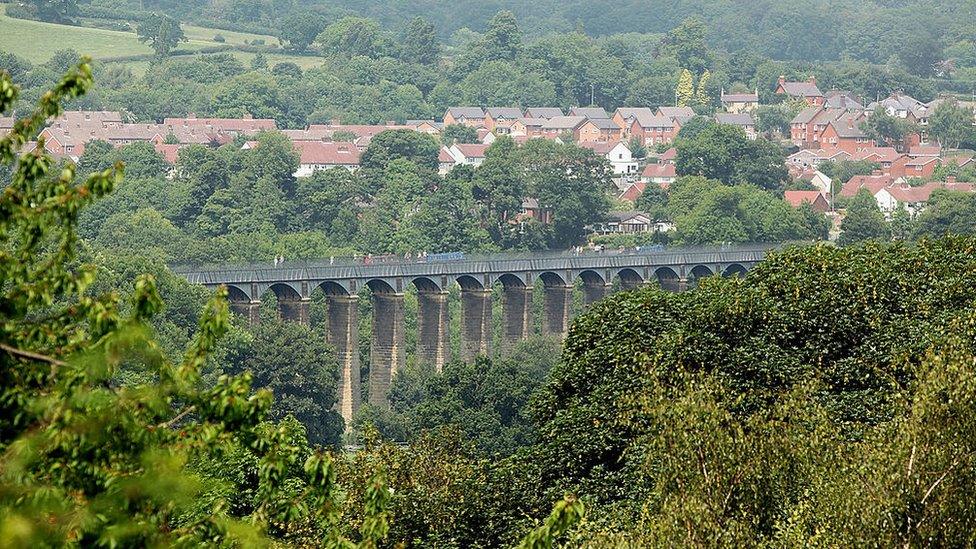
Pontcysyllte aqueduct is the highest canal aqueduct in the world
Wales already had three World Heritage Sites and one of those, like the slate landscape, is also in the north west.
The castles and town walls, external in Gwynedd built by King Edward I were among the first sites in the UK to join the list when it was inscribed in 1986 alongside Stonehenge, Ironbridge Gorge in Shropshire and Durham Castle and cathedral.
Unesco said the four castles of Beaumaris, Conwy, Caernarfon, Harlech and the attendant fortified towns at Conwy and Caernarfon "are the finest examples of late 13th Century and early 14th Century military architecture in Europe".
Wales' other Unesco sites are the Pontcysyllte Aqueduct - the highest canal aqueduct in the world - which spans the River Dee in Wrexham county and Blaenavon industrial landscape in Torfaen.
Where are the UK's other sites?
Liverpool hit the headlines earlier this month when it was stripped of its World Heritage status after a UN committee found developments threatened the value of the city's waterfront.
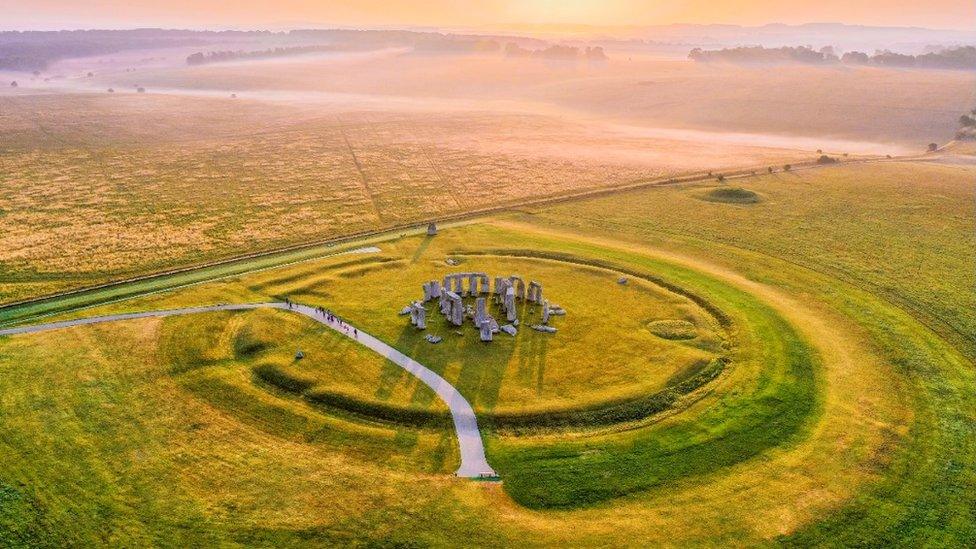
Stonehenge in Wiltshire is among the most famous groups of megaliths in the world
The UK has 31 other World Heritage sites including Stonehenge, the Tower of London, Palace of Westminster and Westminster Abbey, the Lake District, Maritime Greenwich and Hadrian's Wall.
Where are the most famous Unesco World Heritage Sites?
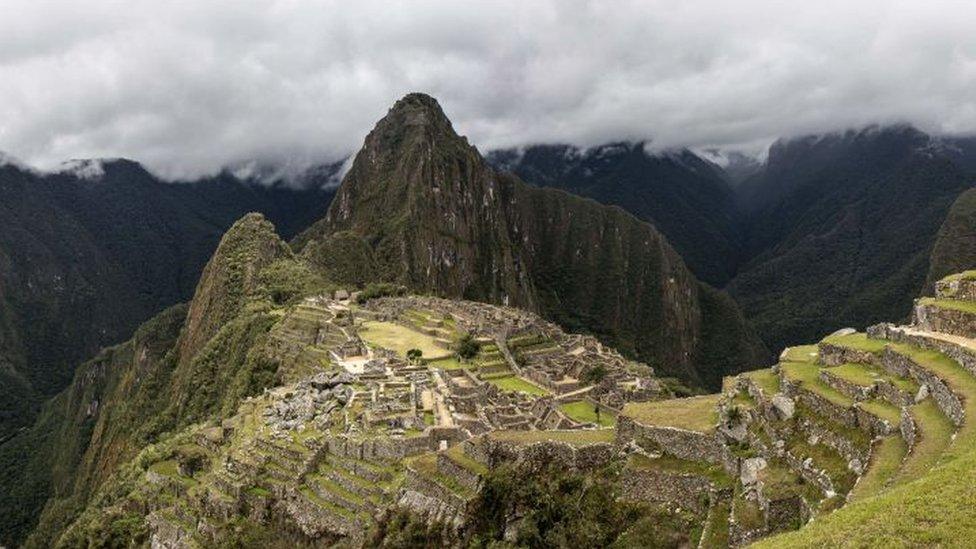
Machu Picchu was inscribed on the World Heritage List in 1983
There are 1,121 historical significant sites in 167 countries across the world that have been inscribed on the list, including Egypt's Pyramids, India's Taj Mahal and Australia's Great Barrier Reef.
Machu Picchu, external in South America, the Grand Canyon, external in the United States, the Great Wall of China, external and the Galapagos Islands, external in the Pacific Ocean are also among those on the list.
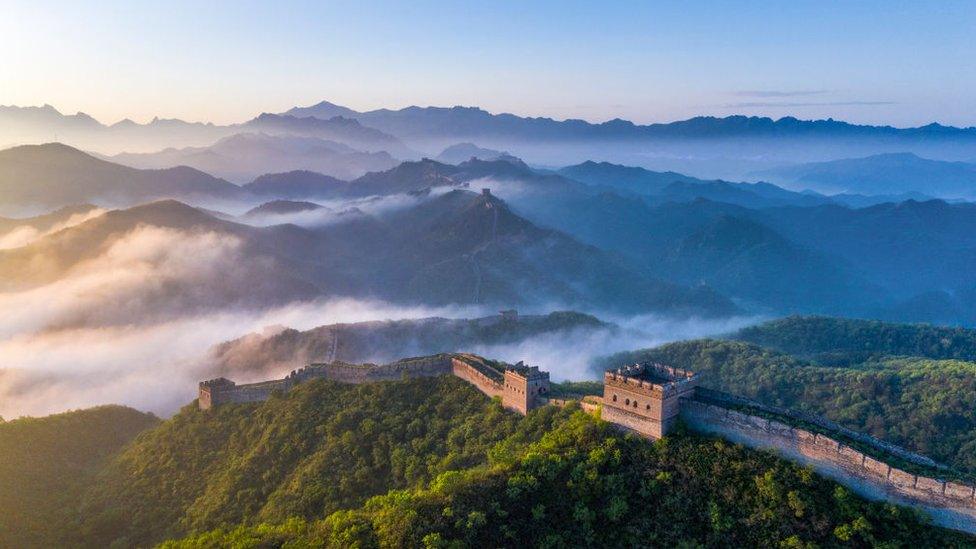
The slate region joins the Great Wall of China which was inscribed on the World Heritage List in 1987
Related topics
- Published28 July 2021
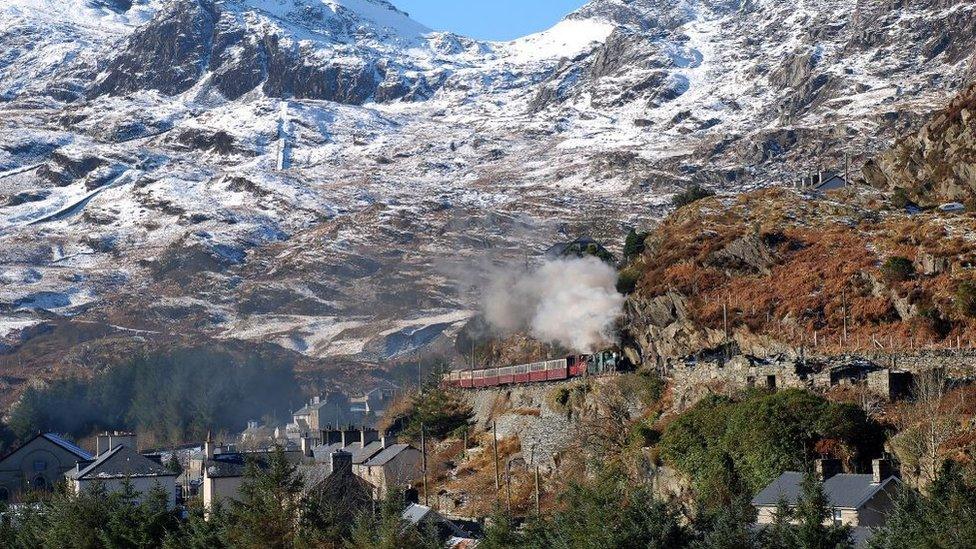
- Published25 July 2021
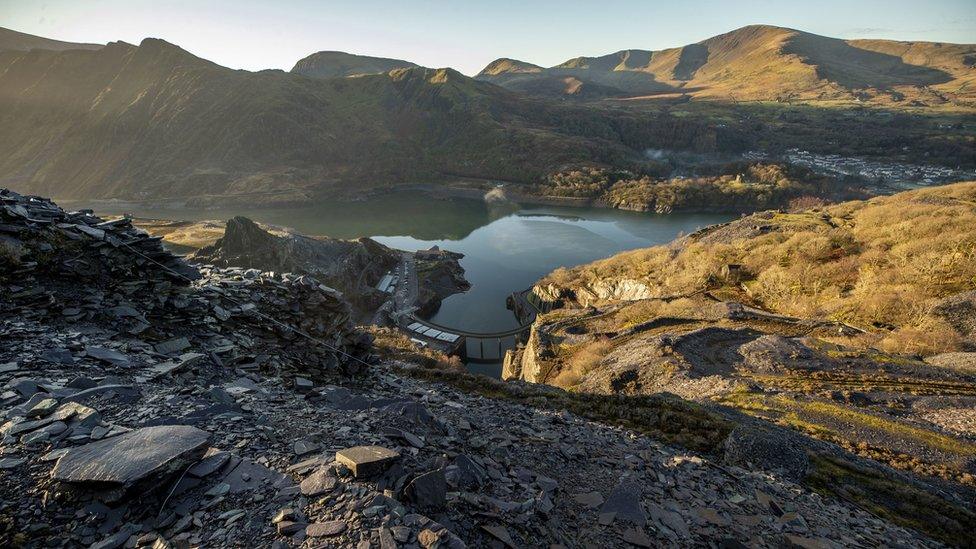
- Published21 July 2021

- Published24 January 2020
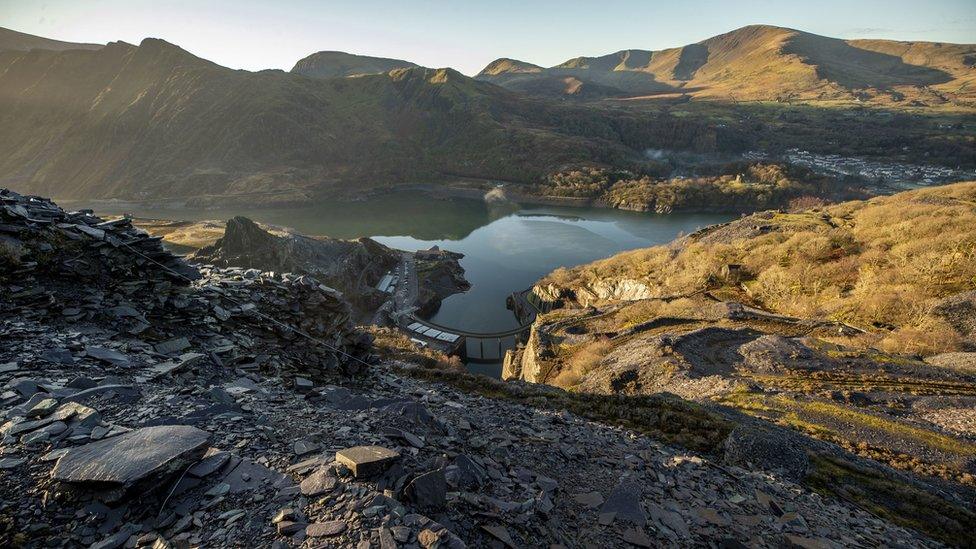
- Published18 August 2019
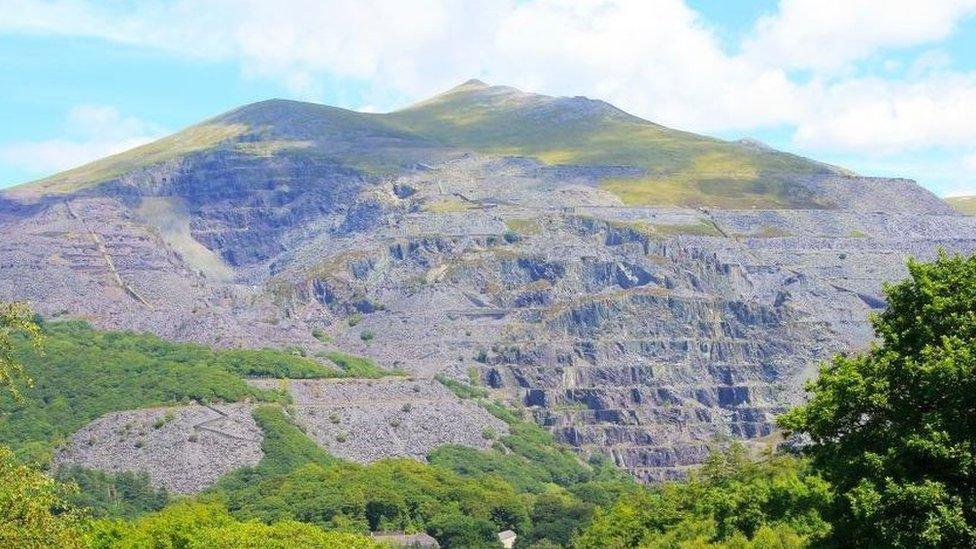
- Published23 October 2018
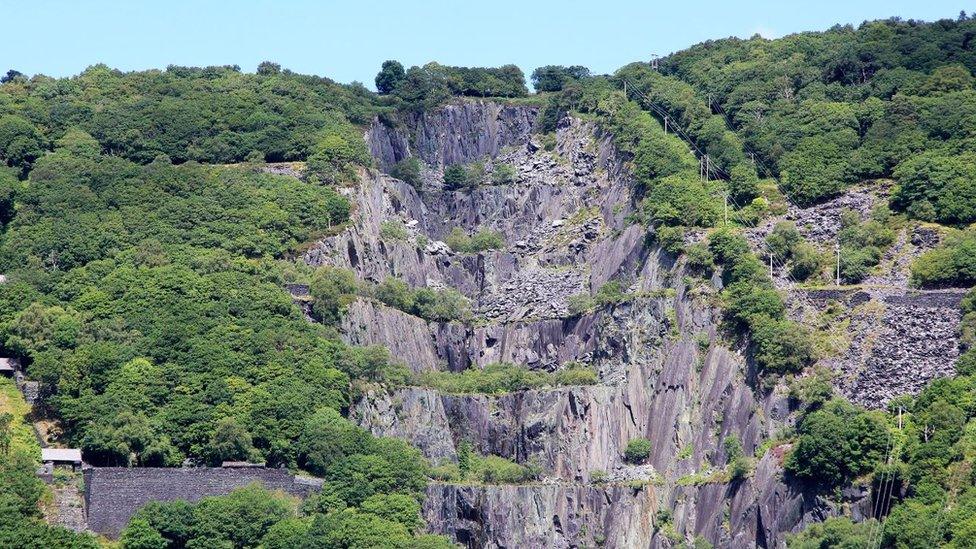
- Published25 July 2021
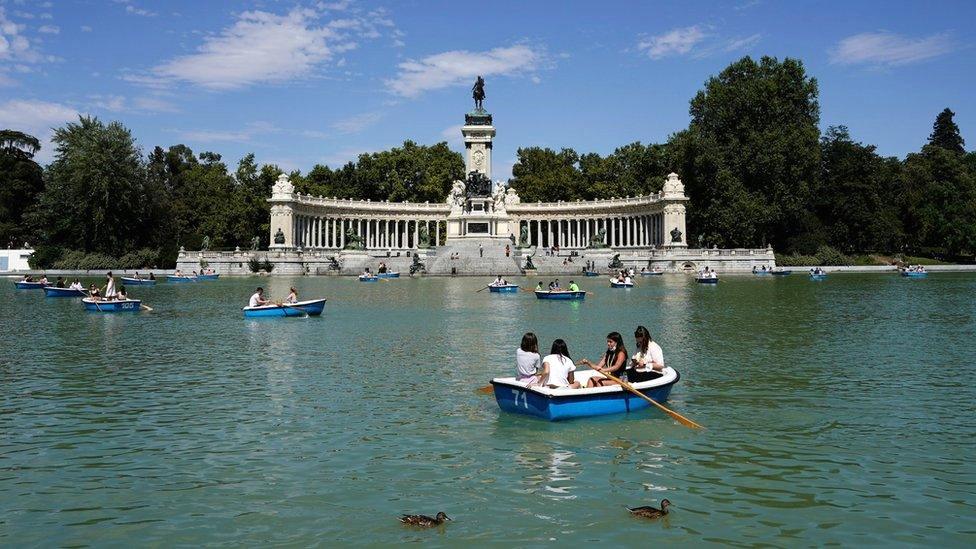
- Published23 July 2021
